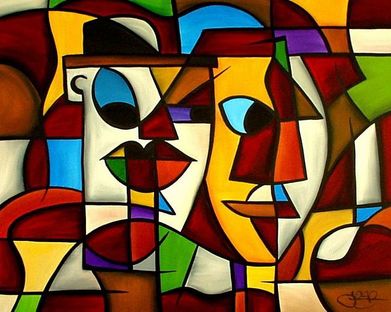Cubism is the first form of abstract art that originated in France and Spain in the year 1907. It was an art movement that gained popularity as one of the most influential visual art styles during the early 20th century.
As for Picasso, it was his work, Les Demoiselles d’Avignon that gained him recognition as a Cubist painter.
For the proponents of Cubism, they rejected the idea that art should mirror nature or the idea that art should reflect the traditional techniques of perspective and modeling. Instead, they wanted to emphasize the two-dimensionality of the canvas.
This is the reason why when you look at a work of a Cubist painter, there is hardly any perspective involved or you will most likely see objects or people from several different angles.
Additionally, you will often see not just cubes, but also cones, spheres, cylinders and collages.
First, you need to decide if you want your art to look like a picture that's broken up or a load of different shapes and objects collaged together.
From there, make a sketch of your artwork using a pencil. Just keep on practicing what you want to achieve on scratch papers before transferring to your canvas.
Third step, and once you are on your canvas, lightly draw your final design, still, using a pencil. Drawing lightly is important so if ever you make a mistake, it will be easy to remove it with an eraser.
And since this is a form of Cubist work, overlap objects and twist them about. Remember, it does not have to look realistic at all! Break up the shapes even more using straight lines that go in all sorts of directions for a more abstract look.
From there, start adding colors in the different sections of your sketch.
If you want to learn more how to create Cubist art as well as the other movements that shape art today, join us in one of our classes here at Art Smart!








 RSS Feed
RSS Feed
